Elements of ventilation and their value in the system
As you know, any system consists of a set of components that ensure the smooth operation and maintenance of optimal conditions inside the premises. It can be products made from various materials, and if earlier metal parts were used most of all, nowadays plastic elements of ventilation are increasingly used, they are distinguished by low weight and fairly affordable cost.

Main types of elements
Despite the fact that the number of different elements is very large, there is a certain list that is used almost always, consider the main nodes that are present in almost any system.
| Fans and ventilation systems | With this type of device you can move the air through the system or carry out its direct inflow or outflow from the room. If the air volumes are large, then whole installations with high productivity are used, capable of performing ventilation over a long period of time. |
| Air ducts | Through these elements, the air is moved in the right direction. Without these simple components, the functioning of the system is impossible; therefore, it is desirable to choose high-quality products, their price is somewhat higher, but both the functionality and the appearance are much better. |
| Air heaters | Used in communications that can change the temperature of the air supplied. Moreover, it is the heaters that are most often used, since they can be used to reduce heating costs by maintaining optimum humidity and air composition. |
| Filter elements | Without air filters, it is difficult to imagine even the simplest systems. Thanks to them, the dust from the street does not get inside buildings, sometimes there is a reverse process, when the air from the production premises is cleaned of harmful components in order to prevent them from entering the atmosphere |
| Regulatory and locking elements | Designed to change the intensity of air supply, as well as its redistribution and mixing while regulating temperature indicators. There are many varieties of this type of nodes that are selected individually for each project. |
| Air distributors | This group of products includes all elements through which air enters the room or is removed from it. They are made in the form of grids, panels, assemblies, additionally equipped with fans, slotted elements, etc. |
| Thermal insulation elements | They are used to insulate air ducts in order to prevent heat loss or cold, as well as to avoid condensation on the surface |
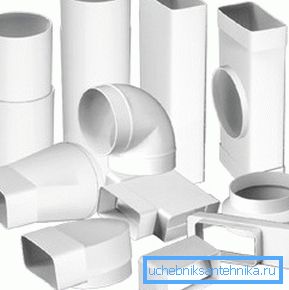
Functions of system nodes and their features
We have reviewed the types of elements, now we will focus on each of them in more detail and in detail. This information will help you choose the best options for a particular system.
Fans and ventilation units
This is one of the basic elements, because thanks to it the air inside the system moves and a pressure drop necessary for air movement is created.
By design, all devices of this type can be divided into three main groups:
- Axial or axial devices are simple in design and compact, making this option most popular among developers.. Installation instructions are simple, so we can say that the axial fan is ideal for small systems.

- Centrifugal or, as they are also called, radial fans, are a body in the form of a cochlea, in which are placed the blades that supply air in one direction. Most often performed in a metal case and are designed for suction air mixture.
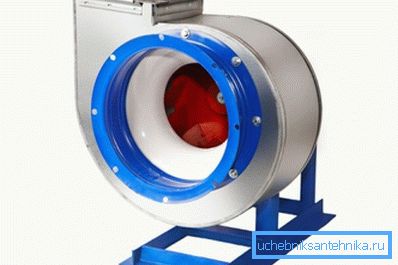
- Diametric fans are used in air conditioning systems and air curtains are also quite widely. They are made in the form of a wheel up to 120 cm long, which runs perpendicular to the direction of air in the air ducts, so with its help it is easy to change the direction of flow, the distinctive features are high performance and very low noise level during operation.
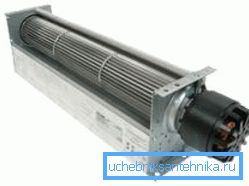
You can purchase fans both separately and as a separate section or unit, that is, all the elements are assembled into a single node, which is installed in a particular place, according to the type of arrangement, the following options can be distinguished:
- Installations located in the ventilation ducts.
- Internal systems located in the ventilation chambers.
- Roof-mounted systems.
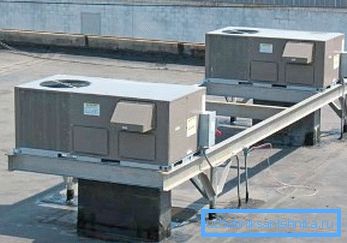
Air ducts
All elements of ventilation ducts can be divided into groups according to a particular attribute, for example, according to the material of manufacture there are the following options:
- Metal products (most often made of galvanized or stainless steel).
- Metal structures are units of plastic, which are additionally reinforced with a layer of metal or metal frame.
- Plastic products differ in the material from which they are made, because different types of plastics have different characteristics.
Note! If you are doing the work yourself, you must select products with flange connections, as this is the easiest and highest quality option.
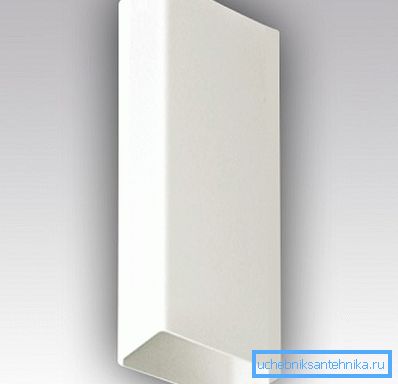
Air heaters
Used in systems where it is necessary to control the temperature of the air flow, there are several main varieties:
- Water devices use water heated to 90-95 degrees when operating. The following components are used as a heat exchanger: tubular and plate-type radiators, spiral tubes, and other options.
- Steam systems use the heat of water vapor, which is released into the air through a heat exchanger, which is most often made of copper, aluminum or another alloy with high thermal conductivity properties.
- Electric air heaters use current, the main working element is a spiral that heats up to high temperatures.

Filters
This product group is designed to clean supply or exhaust air. Choosing one or another option, you should be guided by the degree of contamination and the required quality of cleaning.
According to generally accepted standards, all filters can be divided into 3 main groups:
- Coarse cleaning.
- Fine cleaning.
- Extra fine cleaning.
Remember! For proper air cleaning, it is necessary that the filter element is installed tightly in a special frame, and access to it must be free in order to make a replacement.

Shut-off and control units
There are many types of such devices, consider their main options:
- Depending on the method of execution of the valves, there are uninsulated and insulated (insulated) variants.
- Depending on the nature of the work, there are locking (two-position) and regulating elements.
- Depending on the nature of the functions performed, it is possible to distinguish separating, mixing, and locking devices.
- There are also non-return and conventional valves, regulating diaphragms and many other more complex and high-tech options.

Air distributors
Through these nodes, the air enters or is removed from the room, there are a huge number of configurations, but the most popular are the following:
- Special ceiling.
- Slotted construction.
- Lattices of various sizes and shapes.
- Pressure increasing nozzles.
- Devices with different nozzles that can be replaced depending on the functions performed.

Conclusion
In fact, to make high-quality and productive ventilation, you do not need to be a professional, but nevertheless it is better to coordinate the system design with specialists to avoid mistakes and miscalculations.
The video in this article will help to understand some of the features of the topic even better.